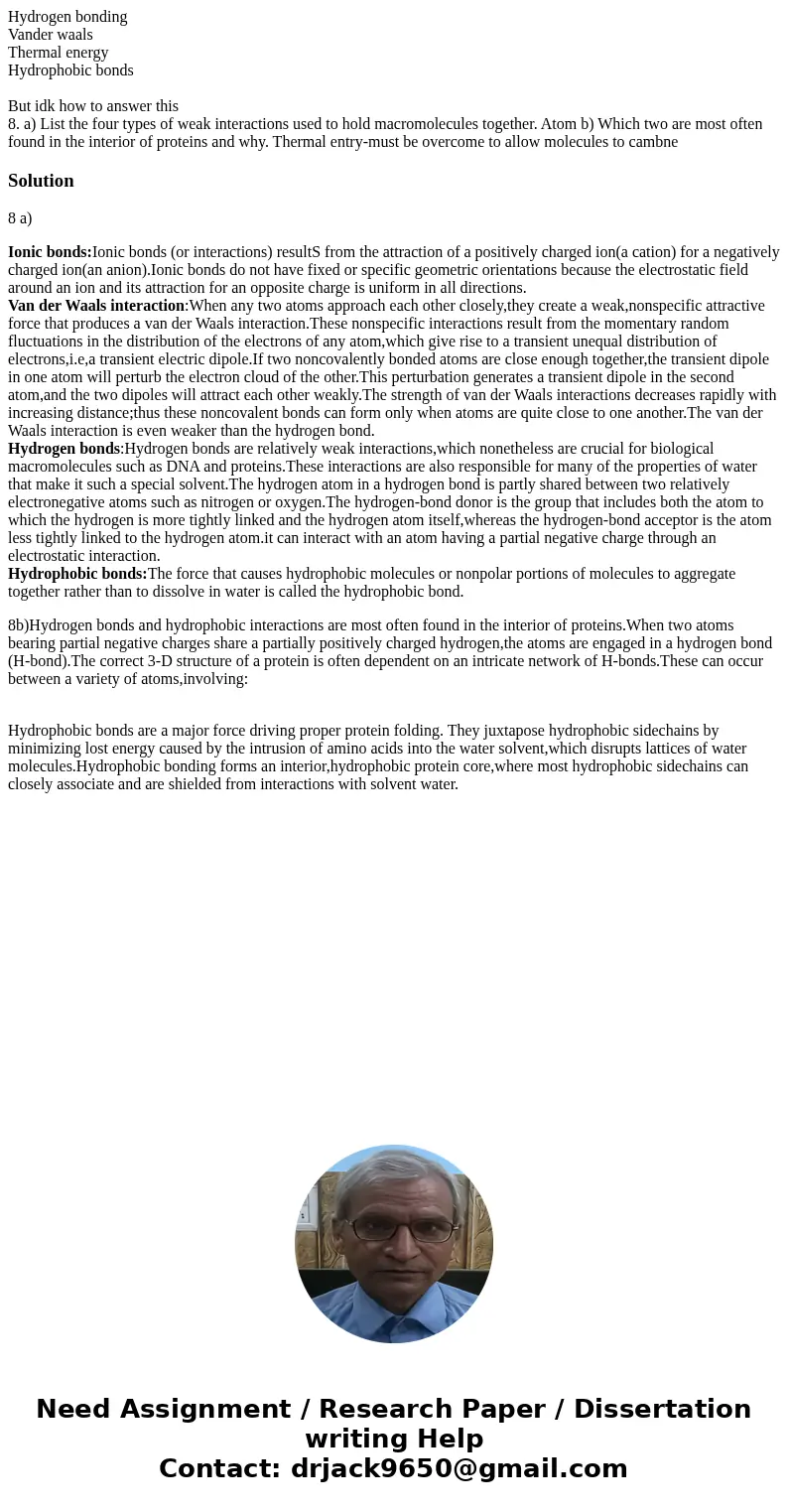Hydrogen bonding Vander waals Thermal energy Hydrophobic bon
Solution
8 a)
Ionic bonds:Ionic bonds (or interactions) resultS from the attraction of a positively charged ion(a cation) for a negatively charged ion(an anion).Ionic bonds do not have fixed or specific geometric orientations because the electrostatic field around an ion and its attraction for an opposite charge is uniform in all directions.
Van der Waals interaction:When any two atoms approach each other closely,they create a weak,nonspecific attractive force that produces a van der Waals interaction.These nonspecific interactions result from the momentary random fluctuations in the distribution of the electrons of any atom,which give rise to a transient unequal distribution of electrons,i.e,a transient electric dipole.If two noncovalently bonded atoms are close enough together,the transient dipole in one atom will perturb the electron cloud of the other.This perturbation generates a transient dipole in the second atom,and the two dipoles will attract each other weakly.The strength of van der Waals interactions decreases rapidly with increasing distance;thus these noncovalent bonds can form only when atoms are quite close to one another.The van der Waals interaction is even weaker than the hydrogen bond.
Hydrogen bonds:Hydrogen bonds are relatively weak interactions,which nonetheless are crucial for biological macromolecules such as DNA and proteins.These interactions are also responsible for many of the properties of water that make it such a special solvent.The hydrogen atom in a hydrogen bond is partly shared between two relatively electronegative atoms such as nitrogen or oxygen.The hydrogen-bond donor is the group that includes both the atom to which the hydrogen is more tightly linked and the hydrogen atom itself,whereas the hydrogen-bond acceptor is the atom less tightly linked to the hydrogen atom.it can interact with an atom having a partial negative charge through an electrostatic interaction.
Hydrophobic bonds:The force that causes hydrophobic molecules or nonpolar portions of molecules to aggregate together rather than to dissolve in water is called the hydrophobic bond.
8b)Hydrogen bonds and hydrophobic interactions are most often found in the interior of proteins.When two atoms bearing partial negative charges share a partially positively charged hydrogen,the atoms are engaged in a hydrogen bond (H-bond).The correct 3-D structure of a protein is often dependent on an intricate network of H-bonds.These can occur between a variety of atoms,involving:
Hydrophobic bonds are a major force driving proper protein folding. They juxtapose hydrophobic sidechains by minimizing lost energy caused by the intrusion of amino acids into the water solvent,which disrupts lattices of water molecules.Hydrophobic bonding forms an interior,hydrophobic protein core,where most hydrophobic sidechains can closely associate and are shielded from interactions with solvent water.

 Homework Sourse
Homework Sourse